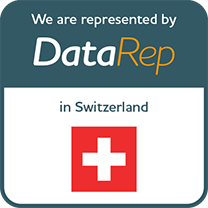Marketing has never been so blessed. Information and data, the building blocks of customer understanding, have never been more available to us. The rapid increase in the breadth, depth and reactivity of information has led to the growth of digital tools that allow us to get this information more quickly than ever before.
Promising both automation and ‘self-serve’, these tools have become very popular. Digital sentiment tracking, automated trend forecasting and artificial intelligence-based desk research tools are now embedded at most major companies. They constantly, and deservedly, win awards for innovation.
But with the guarantee of ‘more information, more quickly’ and their promise to deliver ground-breaking insights in record-breaking time, they should be a huge ally of any insight team. So why then are we seeing more and more clients suffering from information-overload? More and more data, with fewer and fewer insights? Why do we see insight teams being downsized? Why do we see marketers feeling frustrated that these ‘silver bullet’ tools aren’t leading them to better campaigns or innovations?
We love these tools but see them as part of a wider insight infrastructure, with humans at the centre. Humans are the sense-makers, needed to turn swathes of information and data into meaningful insights for the business.
Unfortunately, this frequently isn’t what happens in practice. As witnessed with tech advancements in other sectors, in many cases these tools have been presented and positioned as an ‘opportunity’ to reduce headcount and rely more on automated systems. This ‘shiny new toy syndrome’ assumes that the latest bit of kit is the panacea to all woes. We think about what it can replace rather than what it can build on.
Replacing headcount with tech can be a false economy. These ‘automated’ tools often require a huge amount of time to make sense of their output. And with insight teams often unable to keep up with the ever-increasing volumes of information, we can lose our capability to do it in-house.
In a previous role, I brought a digital listening tool in-house. Senior stakeholders thought this would replace expensive brand tracking, focus groups – you name it! But it was so complicated to actually use that it ended up taking 50% of a colleague’s time. We got to great insights, in the end, but we had to sort through a lot of data and information to get there. That’s before you ask yourself how truly representative Twitter posts are…
In my current role, agency-side, we tell our clients that true insight comes from forging multiple sources of information together. You can’t simply ask consumers what they think, you also need to watch what they do, dig into sales data to see how they spend their money, and predict the trends of tomorrow. The ability to bring all this insight together from multiple sources is an exceedingly rare and powerful skill, a specialist human skill, traditionally found in the insight teams.
These teams, who can take a ‘helicopter view’ across multiple data sources and deliver one story to the business, are like gold dust and need encouraging and nurturing. But with the creeping focus from humans to systems, we run the risk that insight teams become process managers and tool operators. rather than individuals dedicated to harnessing research and insight to drive their businesses forward.
Tools are also leading to the decentralisation of insight. With more teams using (and abusing?) self-service data tools, and without insight teams there to sense-check, we run the risk of creating multiple ‘versions of the truth’. At best, you get duplication or wastage, at worst, ‘insight’ becomes weaponised to win an internal argument versus making the right decision for the business.
Encouragingly, we are starting to see some clients reverse this automation trend, refocusing on human skills.
Maneesh Kaushik, senior insights director at PepsiCo, has said: “We are looking for that potent combination of human and machine. The data tools we have put in place have no doubt sped up our access to information, but it is the human skills of questioning and challenging that create the ‘one version of the truth’ we need to create a commercial advantage.”
So, let’s celebrate these new tools and the rich stream of information they offer. We are truly living in a golden age of data and information. But let’s never forget it’s humans who need to be at the centre of an insight infrastructure to turn information into insights and implications.
If we neglect the need for human sense-makers and storytellers, our data streams can quickly become a flood and our insight teams may not be there to throw the rope to save us.


